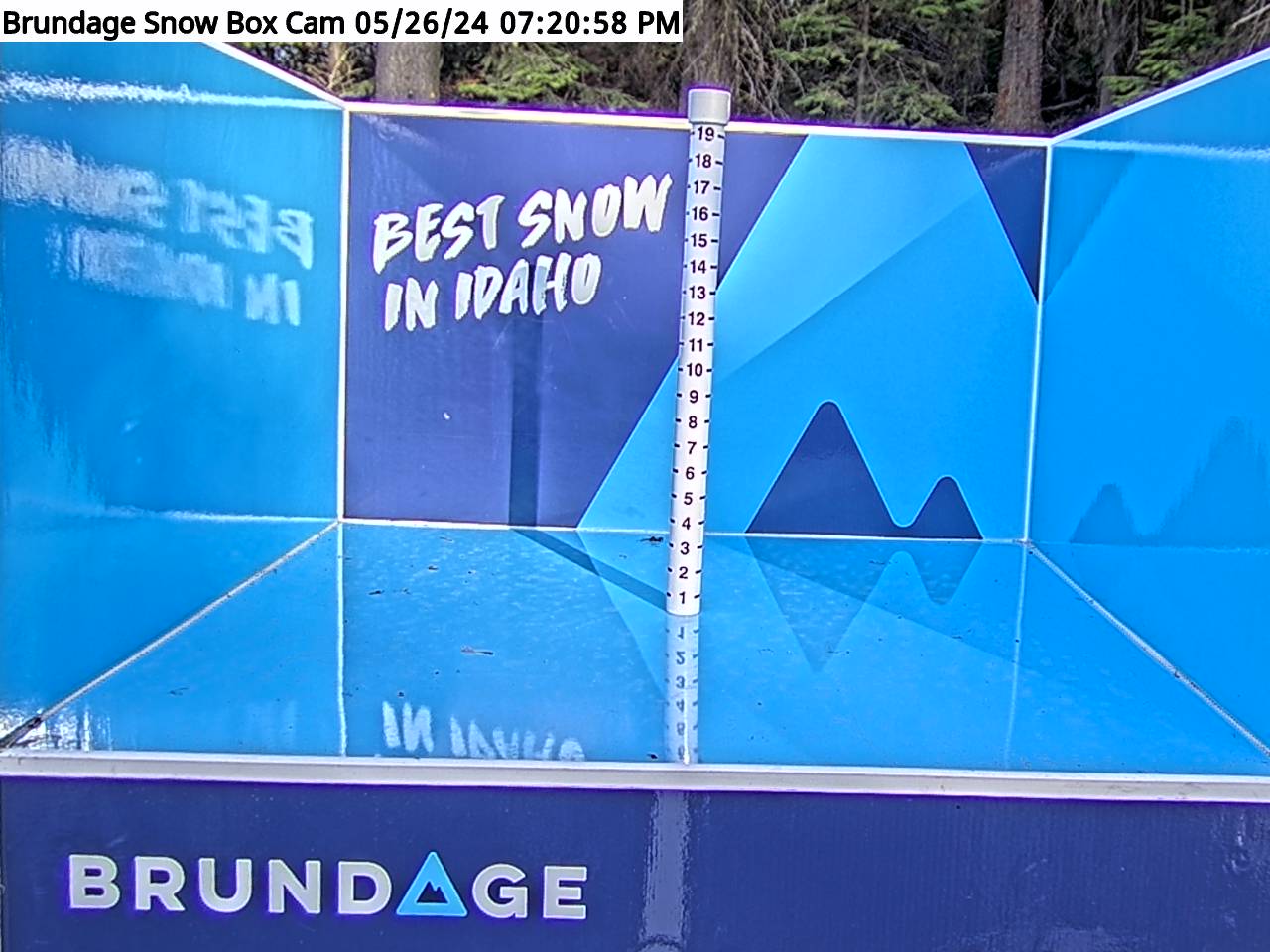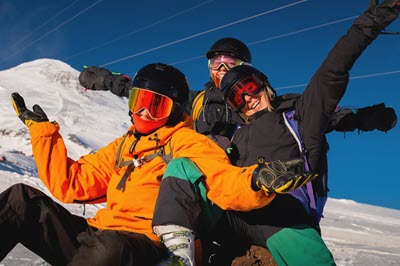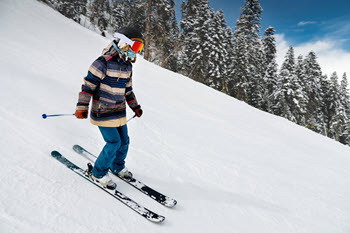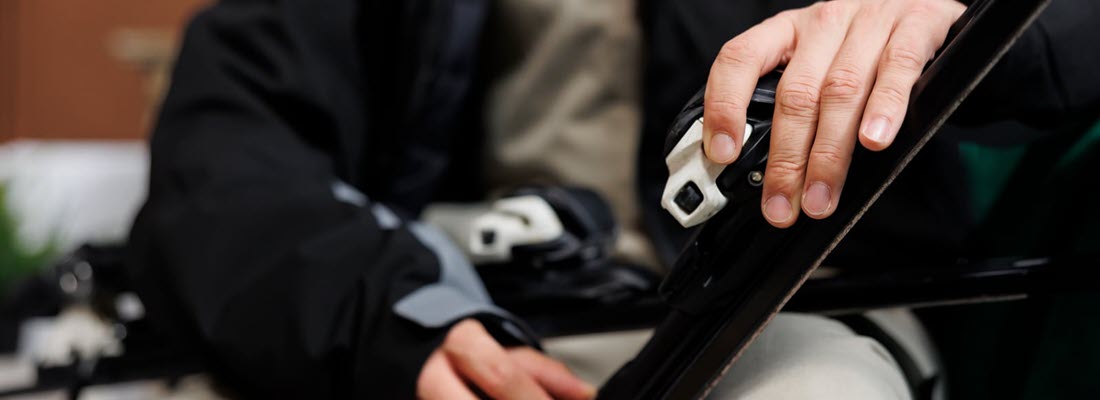
Base Area Snow Cam
Elevation: 6050’ - Brundage Base Area. This box will be cleared daily at 4:00 pm. Click image for larger view.
 Menu Toggle
Menu Toggle
All XC Bike Trails are also open to Hikers. Please Be Aware of Other Users.
Downhill trails are strictly downhill travel only, no hiking allowed.
Closed-toe shoes recommended! There are currently no dog friendly trails open.
Closed until June 14th
Come check out the new routing for our Base Area 9 hole course

 Whether you’re here in the stunning peaks of Idaho for the first time or looking to refine your skills, having the right ski equipment is key to an unforgettable Idaho skiing experience. This blog post will guide you through essential tips and tricks to arm yourself with the best skiing gear for beginners. Strap in as we navigate through the slopes of decision-making – because in skiing, like with any adventure, preparation can make all the difference between glory and an untimely tumble.
Whether you’re here in the stunning peaks of Idaho for the first time or looking to refine your skills, having the right ski equipment is key to an unforgettable Idaho skiing experience. This blog post will guide you through essential tips and tricks to arm yourself with the best skiing gear for beginners. Strap in as we navigate through the slopes of decision-making – because in skiing, like with any adventure, preparation can make all the difference between glory and an untimely tumble.
For beginners hitting the slopes of Brundage Mountain, essential skiing equipment includes a snow helmet with MIPS protection, antifog goggles, underlayers and a neck warmer, water-resistant ski pants, a warm ski jacket made of Goretex, ski socks, Goretex gloves, tall ski socks, and hand warmers. It is important to have comfortable boots as they are the most crucial aspect of skiing equipment. Other recommended items include lip balm, sunglasses, layered clothing with a T-shirt base layer and fleece mid-layer, and reputable brands like Smith offering good options for goggles.
Skiing is a thrilling and challenging sport, but one that requires special equipment to help novices learn and enjoy it safely. As a beginner, it’s crucial to start with the right gear that meets your skill level, preferences, and other specific needs. To get started, here’s a list of necessary beginner skiing equipment you’ll need:
Beginner skis make it easier to learn proper technique in less time by offering great value and an easy platform for learning. They come either as integrated systems with bindings or as flat skis that require separate bindings.
Boots play a crucial role in helping you maintain control over your skis, so getting well-fitting and comfortable boots is essential for beginners.
While not necessary to ski initially, poles offer greater stability and control once you have learned the basics of skiing.

When choosing skis as a beginner, it’s essential to pick ones that are suitable for your skill level. Top picks for the 2024 season include both cheap, entry-level models and all-mountain designs for athletic or ambitious beginners. Here are some types of skis you can choose from:
Think of beginner skiing equipment like a car towards which you must apply foundational knowledge before driving it around expertly.
These versatile skis perform well on different terrains such as groomed runs or powder snow and are great for newbies who want to explore various slopes without making another purchase altogether.
These are perfect for beginners because of their lightweight construction which makes them easy to maneuver. The design enables quick turns and tweaks in your stopping position.
Twin-tips are a good option for complete beginners who have an interest in freestyle skiing. These skis have tips and tails that are bent upwards and make it easy for you to ski backward.
When it comes to skiing, the importance of well-fitting boots cannot be overstated. Apart from being one of the most critical pieces of equipment, ski boots play a crucial role in control and stability while cruising the slopes. The right pair should keep your feet warm and dry, comfortable, and fit securely on your feet. Beginners should avoid renting as much as possible since they might not fit correctly, leading to sub-optimal performance.
A good example of a boot favored by beginners is the Atomic Hawx Prime 80. This option provides adequate comfort and support for new skiers without breaking the bank. Note that when fitting boots, tightness is necessary for maximum control but not so much that they cut off circulation.
 Skiing is an activity enjoyed best in comfort. High-quality clothing plays an important role in ensuring you are adequately protected against the cold weather elements while maintaining freedom of movement. Essential skiing clothes include jackets, pants, gloves, helmets, and goggles.
Skiing is an activity enjoyed best in comfort. High-quality clothing plays an important role in ensuring you are adequately protected against the cold weather elements while maintaining freedom of movement. Essential skiing clothes include jackets, pants, gloves, helmets, and goggles.
With jackets and pants especially, waterproof fabrics like Gore-Tex or eVent are essential in keeping skiers dry while still allowing breathability. Consider insulated options if you’re skiing in extremely cold environments. Additionally, helmets have become an essential piece of safety gear with good reason – they protect the head from accidents like falls and collisions.
When it comes to which brand offers the best skiing apparel out there in terms of value for money versus quality and performance offered, opinions vary among seasoned skiers. While bigger names such Aspen-based Gorsuch or Vermont-based Stowe Mountain Resort offer excellent high-end clothing range for seasoned riders looking to make a fashion statement on and off-piste, more affordable quality brands such as Columbia or Helly Hansen are ideal for beginners or anyone on a budget.
It’s worth noting that a good deal hides in plain sight often; visiting online marketplaces such as Amazon or discount stores like TJ Maxx or Marshalls might get you suitable skiing apparel for a fraction of the cost. With virtually unlimited options in terms of designs, colors, and styles to choose from, keen buyers will find everything they need with a bit of persistence, patience and effort.
When heading to the slopes, beginners must have adequate insulating layers, so they remain warm throughout the day. Layering is important, and it begins with a good base layer (also known as thermals) to keep us dry and warm. Thermal base layers can be bought from brands like Helly Hansen or Decathlon. It’s equally essential to have a suitable middle layer. A good-weight fleece or lightweight down jacket is perfect for the mid layer. Fleece regulates temperature and traps warm air close to the skin, ensuring that body heat doesn’t escape easily.
When skiing in Idaho, one of the most prominent concerns is staying dry and comfortable in cold wet weather. Therefore, it makes sense always to opt for waterproof ski outerwear made of materials such as Gore-Tex. Such fabrics are water-resistant yet breathable enough for sweat vapors to escape when engaging in physical activity.
It’s ideal for ski jackets and pants to have an adjustable feature such as elastic cuffs or gaiters. These help create a tight barrier that prevents snow from entering the boots or gloves while skiing. Additionally, having a snow skirt attached on the inner side of ski jackets can also prevent snow from getting inside clothing.
For instance, supposed you’re looking for waterproof ski wear on a budget, you might want to check out the Mountain Warehouse Bracken Extreme 3-in-1 Mens Jacket and the Trespass Men’s Corvo Waterproof Trousers. However, suppose you’re willing to invest in higher-end Gore-Tex options, Arcteryx products, or Salomon Ski Gear could be a great bet.
Skiing is an extremely exhilarating sport that requires proper gears for safety. When selecting skiing equipment, it’s necessary to prioritize protective gear before anything else. The primary protective gear every beginner needs include helmets, goggles, gloves/mittens, and boots. While some rental ski shops might provide these items for rent, it’s best to own them as they fit more perfectly and provide better safety.
For instance, the importance of wearing helmets can’t be overemphasized. Irrespective of how experienced a skier may be, collisions and falls are inevitable in skiing. Helmets are designed to reduce the impact of head injuries and cushion falls of varying impact levels.
Helmets and goggles are arguably the two most crucial protective gear required by every beginner skier.
According to the National Ski Areas Association (NSAA), “skiers and snowboarders who wear helmets are SEVEN times less likely to have a head injury.” This statistic alone should be enough to convince any beginner skier of the importance of wearing a helmet. Furthermore, wearing helmets not only protects skiers from head injuries but also makes them feel more secure while skiing.
In choosing a helmet, beginners should prioritize getting one with a hard shell made of ABS or polycarbonate materials as they provide better protection against impact compared to softer shells made of EPS foam. And be sure the helmet fits snugly to ensure maximum protection.
For beginner skiers, goggles offer adequate protection against harsh weather conditions such as snow glare and windburns. They also shield eyes from tree branches or any foreign object that may fly off during skiing activities. When purchasing goggles always have in mind clarity, ventilation system and compatibility with other types of helmets.
While there are several other skiing equipment beginners need aside from the protective gear, it’s best to start with these basic necessary gears before advancing. In buying skiing equipment, be sure to factor in the cost and quality to get the optimal skiing experience at a fair price.

When you’re new to skiing, it’s natural to want to invest in high-end gear. However, if you’re on a tight budget, this may not be possible. Fortunately, there are options that won’t break the bank while still providing quality and durability. Look for budget-friendly gear options like Goodr snow goggles ($75) or Columbia Highland Summit jacket ($200) that provide warmth, comfort, and protection without the premium price tag. Additionally, consider brands like Salomon or Rossignol, which offer reliable skis without costing a fortune.
For example, the Salomon Stance 88 W frontside skis are priced at $650 and provide excellent value for money. They are perfect for beginner-level skiing and offer all the necessary features without an exorbitant cost.
One of the most significant decisions facing novice skiers is whether to rent or buy equipment. It is preferable if one rents skiing equipment during early trips until they have a solid understanding of their preferences, focus, and skills on the terrain.
Renting also avoids the hassle and upkeep of owning your own equipment. While rental gear offers flexibility without breaking the bank, it’s typically older than equipment offered by ski resorts’ retail shops. Rental gear may also require the added hassle and time of picking it up from a rental shop, meaning less time on the slopes if your plans are rushed.
On the other hand, purchasing equipment means you have access to new gear customized to your body and ski preferences. Furthermore, owning your own equipment can save money in the long run as costs of renting items every season can add up. Owning gear can also minimize last-minute stress or unexpected moisture/poor visibility while skiing by ensuring you have the right lenses or outerwear for unfavorable conditions.
The significant downside to owning gear is that it requires a higher initial investment. For beginners who aren’t sure about whether skiing will become a full-fledged hobby, heavy equipment bags could end up gathering dust in storage after one season.
With new ski equipment you will be ready to hit the slopes for the best skiing in Idaho.